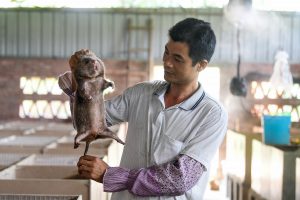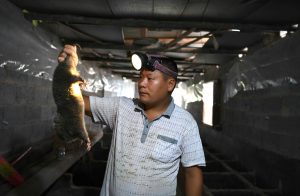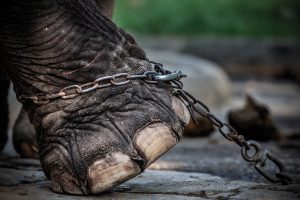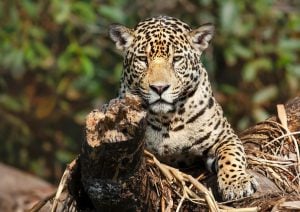The coronavirus epidemic, and its suspected link to the consumption of wild animals, prompted the National People’s Congress Standing Committee (NPCSC) to call for a ban on eating terrestrial wild animals in late February. This would be China’s toughest restriction ever on the wildlife trade, but it would include some exemptions in the form of a whitelist. Captive-bred animals on the list could still be eaten because they would be regarded as livestock and poultry, not wildlife, and so would fall under the Animal Husbandry Law.
In April, the Ministry of Agriculture (MOA) issued a draft of the whitelist for consultation, which it calls the National Livestock and Poultry Genetic Resources Directory. Alongside traditionally farmed animals, it features a “special livestock and poultry” list of 13 wild animal species.
Species on the Ministry of Agriculture’s whitelist
Traditional livestock
| Species | Breeds |
| Pig | Local breeds, cultivated breeds (including cross-breeds of wild and domesticated pigs) and associated strains, and imported breeds and associated strains. |
| Horse | Local breeds, cultivated breeds and imported breeds. |
| Donkey | Local breeds, cultivated breeds and imported breeds. |
| Camel | Local breeds, cultivated breeds and imported breeds. |
| Cattle (cow, zebu, water buffalo, yak, gaur) | Local breeds, cultivated breeds and associated strains, and imported breeds and associated strains. |
| Sheep, goat | Local breeds, cultivated breeds and associated strains, and imported breeds and associated strains. |
| Rabbit | Local breeds, cultivated breeds and associated strains, and imported breeds and associated strains. |
| Poultry (chicken, duck, goose, turkey, pigeon, quail) | Local breeds, cultivated breeds and associated strains, and imported breeds and associated strains. |
Special livestock and poultry
| Species | Breeds |
| Sika deer | Local breeds, cultivated breeds and imported breeds. |
| Red deer | Local breeds, cultivated breeds and imported breeds. |
| Reindeer | Local breeds, cultivated breeds and imported breeds. |
| Alpaca | Cultivated breeds and imported breeds. |
| Helmeted guineafowl | Cultivated breeds and imported breeds. |
| Ring-necked pheasant | Local breeds, cultivated breeds and imported breeds. |
| Chinese francolin | Cultivated breeds and imported breeds. |
| Mallard | Cultivated breeds and imported breeds. |
| Common ostrich | Cultivated breeds and imported breeds. |
| American mink (non-food use) | Cultivated breeds and imported breeds. |
| Silver fox (non-food use) | Cultivated breeds and imported breeds. |
| Arctic fox (non-food use) | Cultivated breeds and imported breeds. |
| Raccoon dog (non-food use) | Local breeds, cultivated breeds and imported breeds |
Explanatory notes attached to the draft say the animals listed have long been domesticated and bred for commercial farming, adding that public health and ecological concerns have been considered, as have the traditions of ethnic minority groups and “common international practice”.
But the sika deer and red deer are Class I and II state protected animals, respectively, and several different subspecies of the ring-necked pheasant and Chinese francolin have Class I or II protection, or they belong to the so-called “three-haves” animals. These are terrestrial animals that have “important ecological, scientific and social value” and are protected by the Wildlife Protection Law. The last category also includes the mallard and raccoon dog, which are also in the proposed directory.
The explanatory notes say the sika deer was included because it has a long history of being farmed and supports an established industry. The red deer and reindeer were included because they are traditionally used by ethnic minorities. The alpaca is an imported species but “has long been domesticated and has various uses”. Several of the bird species have been imported and are subject to established farming practices. The American mink, silver fox, Arctic fox and raccoon dog are included as “China has developed breeds suitable for farming, and these are primarily used for fur and for export, not food use”.
There are five lists currently in use by the National Forestry and Grassland Administration and the Ministry of Agriculture to manage wild animal farming:
National Forestry and Grassland Administration
1. Directory of Captive-bred State Protected Terrestrial Wild Animals (Batch 1)
Ministry of Agriculture
1. China Livestock and Poultry Genetic Resources Directory
2. Directory of Captive-bred State Protected Aquatic Animals
3. Directory of State Protected Commercial Aquatic Animal and Plant Resources
The text also makes clear that while the Animal Husbandry Law applies to these animals when farmed, wild populations still fall under the Wildlife Protection Law and the governance of the National Forestry and Grassland Administration (NFGA).
Will there be only one whitelist?
According to media reports, the MOA has published a similar whitelist before called the China Livestock and Poultry Genetic Resources Directory. Versions circulating online (China Dialogue couldn’t find an official copy) differ from the new national list only in their inclusion of dogs and bees.
The old directory had already prompted criticism following the outbreak of Covid-19. In mid-March, a petition published by 17 ecologists, environmentalists and social scientists, called on the government “to avoid repeating the mistake of actively utilising wild animals” in its implementation of the NPCSC’s ban on eating wild animals. The experts called for species in the livestock and poultry directory deemed suitable for consumption to be removed and for no new additions. The petition also demanded that farmed wild animals used for non-food purposes only be allowed onto the list following a rigorous scientific process.
This is because it is common for meat from animals whitelisted for use in the fur industry – the American mink, silver fox, Arctic fox and raccoon dog – to end up on dinner tables, or mislabelled and sold to food manufacturers, and there is a high risk of these animals spreading disease to humans. In late January, research carried out at Peking University found that mink were a possible intermediary host of the coronavirus. At the time, other experts also suggested those four species be removed.
But Liu Jinmei, General Counsel for Friends of Nature, says the new draft whitelist is already shorter than she expected.
In mid-February, 10 organisations, including Friends of Nature, Shanshui Conservation Centre and Duke Kunshan University, published a joint proposal for the ongoing revision to the Wildlife Protection Law. They also proposed a whitelist system of wild animals that could be farmed. They set out strict conditions for adding species to the list, including established farming techniques and health standards, low levels of risk to public health, and there being no need to capture animals from the wild. They also called for traceability as a prerequisite for acquiring a farming licence, including retaining genealogical data, breeding files and data on individual animals, and even microchipping.
Liu told China Dialogue that they produced their proposal, which attracted much attention, before the NPCSC’s ban on eating wildlife was announced. Unsure how the government would approach the issue of regulating wild animal usage, their goal was to push for an informal whitelist, which had long been used by the NFGA to greenlight wildlife farming, to be replaced by a public list restrained by law and science. At the time, to them it seemed a more realistic goal
This informal whitelist first emerged in August 2003, shortly after the SARS epidemic ended. The State Forestry Administration (which became the NFGA in 2018) published a list of 54 species for which commercial farming was permitted. This included the civet cat, a SARS intermediary host, and several protected animals such as the sika deer. The list spurred the development of a huge wild-animal farming industry. In October 2012, the State Forestry Administration declared the list invalid. However, courts continued to refer to the list to justify lighter punishments in cases where protected animals were involved or to uphold appeals.

Experts say that farming of wild animals continued after the list was invalidated only without the restrictions that had been put in place by it. Too many animals could now be farmed provided they were not under state priority protection (Class I and II) and legal provenance and health certificates were available. A prominent example is the bamboo rat, which is a “three-haves” animal that was never whitelisted for farming. Yet bamboo rat farming has boomed, with some farmers even becoming online celebrities.
The new whitelist could bring order to this chaotic situation because it doesn’t just cover using animals for food. The special livestock and poultry section of the directory includes animals raised for fur or use in medicines, such as the sika deer, as well as meat.
Is it possible, then, that the current whitelist could regulate all types of wild animal utilisation in future?
Liu Jinmei says that there may be new whitelists after revisions to the Wildlife Protection Law are finalised, but “we’d like to retain one single list – this one from the MOA”.
Li Binbin, an assistant professor of environmental science at Duke Kunshan University, who was involved in writing the February joint proposal, said her first reaction to the whitelist was “this doesn’t look bad”.
She accepts some farming will continue because farmers need to make a living and winding down the sector responsibly will take time. Using the livestock and poultry directory to regulate it makes sense, but she added that farming threatens wild animal populations because these animals are caught to prevent inbreeding in farmed populations. While a market exists for captive-bred wild animals, consumers may continue to prefer those captured from the wild, increasing the risk of poaching. She thinks traceability is a vital precondition of wild animal utilisation.
China has 34 species of tortoise and turtle – and they’re all on the way to extinction. A big reason for that is our utilisation of them, including for food and as petsLi Binbin, Assistant Professor of environmental science, Duke Kunshan University
Li wants to see specific quarantine standards to protect the safety of consumers and farmers. She told China Dialogue that no specific standards were in place for farmed wild animals. Instead, those for traditional livestock are applied to the “special” animals on the directory: pheasants are treated as chickens, mallards as ducks, and deer as cows. But the scientific basis for such practice is unsound.
Li thinks that as a living document, it’s possible that the whitelist will be expanded. However, animals such as the civet cat and bamboo rat are currently listed as “three-haves” by the NFGA, so the MOA cannot include them into the livestock and poultry directory unless that changes. It will be a “long game” among government departments and civil society, she says.
Her main concern is that if this is the only whitelist for the utilisation of wild animals, many farmers will have to quit. It is unclear if or how they will be compensated.
Grey zone for amphibians and reptiles
China’s Wildlife Protection Law divides animals into terrestrial and aquatic categories without defining them. Unlike terrestrial animals, aquatic animals received no protection from the NPCSC eating ban and they certainly do not feature on the proposed whitelist for livestock and poultry – but, Liu and Li say they present even thornier issues.
The most pressing issue is that of amphibians and reptiles who sit on the boundary between terrestrial and aquatic categories, in what Li describes as a wildlife protection “grey zone”. This is because jurisdiction is claimed both by the NFGA, which manages terrestrial animals, and the MOA, which oversees aquatic animals as part of its fisheries remit.
Their situation is “hopeless”, says Li, citing the example of reptiles. “China has 34 species of tortoise and turtle – and every single one is on the IUCN’s Red List as threatened – they’re all on the way to extinction. There are very few left in the wild, and a big reason for that is our utilisation of them, including for food and as pets,” she says.
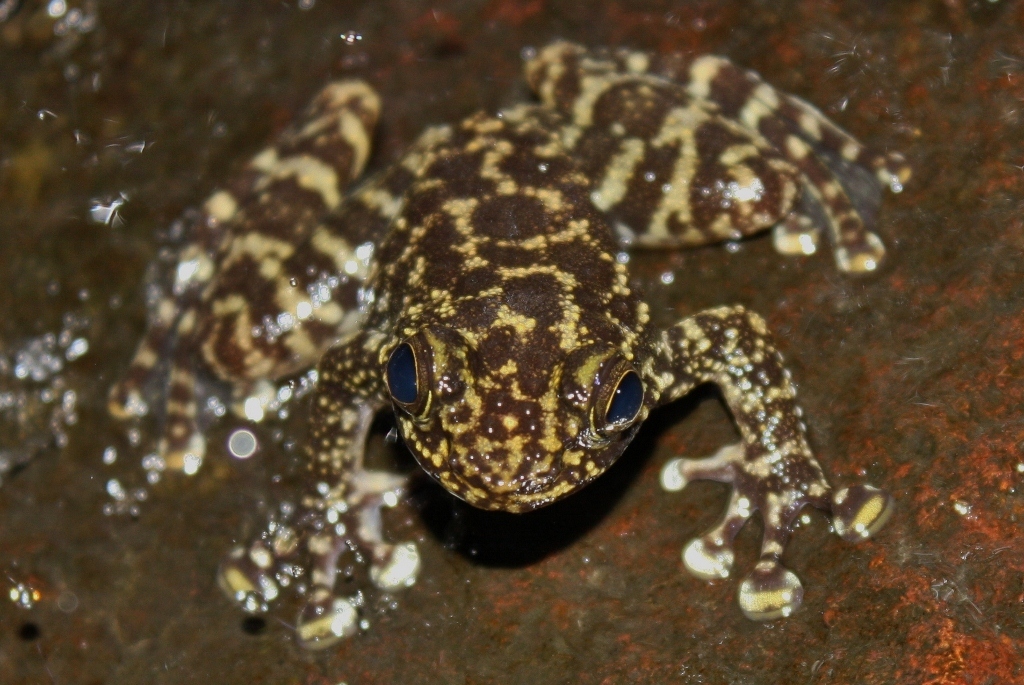
To remove these animals from the grey area, Li Binbin says that in their joint proposal for the revision of the Wildlife Protection Law, they inserted a definition of “aquatic wild animal” to refer to animals that spend their entire life in freshwater or the sea. That excludes amphibians or reptiles that spend part of their life in water, which means those animals will fall under the jurisdiction of the Wildlife Protection Law, rather than the Fisheries Law, which would continue to regard them as resources.
Some authorities are pushing back against the NPCSC’s eating ban by working in the opposite direction of what Li and her colleagues did in their proposal. Two days after the NPCSC’s ban was announced and citing public health risks, Shenzhen announced a plan to further ban the farming of bullfrogs and soft-shell turtles, both widely consumed in the country. This sparked public debate and fierce opposition from the farming industry. Things only calmed down on 4 March, when the MOA issued a statement declaring that such animals, which are listed on its “Directory of State Protected Commercial Aquatic Animal and Plant Resources”, along with amphibians and reptiles on its “List of New Commercial Aquatic Species”, are managed as aquatic animals, and so don’t fall into the scope of NPCSC’s eating ban.
This was a coordinated move. Two days before the MOA’s statement was issued, on 2 March, the NFGA had ordered that farming of animals appearing on the MOA’s “Directory of Captive-bred State Protected Aquatic Animals” and the “Directory of State Protected Commercial Aquatic Animal and Plant Resources”, would be managed as aquatic wild animals, with licenses or documentation already issued to be cancelled.
From that moment, animals that were formerly overseen by both authorities, all either amphibians or reptiles, would be managed by the MOA.
The change may not be confined to animals already on the MOA’s aquatic lists. In early April, conservation activists asked via the NFGA website if farming of the Chinese brown frog was allowed. The response did not directly address farming or eating of the frog. However, it said that experts are working to re-categorise terrestrial and aquatic animals. This means the Chinese brown frog, which is listed as a “three-haves” terrestrial animal and is not present on any aquatic animal list may still be re-categorised as aquatic and lose the protection of the Wildlife Protection Law.
The wildlife eating ban signals China’s wildlife management may shift from blacklisting to whitelisting – that is, rather than protecting certain rare, endangered or important animals, all animals will be protected by default, with farming and utilisation only permitted for those on a whitelist. This could mean stronger protection, if the whitelist(s) won’t be too long and numerous. But the revision to the wildlife law may not improve the fate of aquatic animals that are not rare or endangered – including amphibians, reptiles, fish, aquatic mammals and aquatic invertebrates.
Li Binbin is worried that the MOA’s Bureau of Fisheries is overly keen on utilisation, meaning no hope of improvement for these animals. “We hope to see protection and utilisation separated in future reforms, rather than both going on at the same time by the same authority,” she said.


